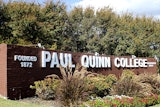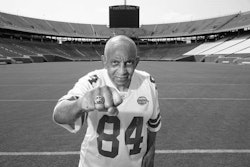Mike Rice, the Rutgers men’s basketball coach, was fired today because a video of him throwing basketballs at and verbally abusing his players went viral. The school probably figures we should all just move along now, there’s nothing more to see here.
Except there is. Let’s see some real accountability.
Rutgers athletic director Tim Pernetti said that he erred by not firing Rice in December after the university investigated the incidents. Rutgers President Robert Barchi said he agreed with the independent investigator’s recommendation that Rice be suspended, fined and get counseling for anger management.
OK, so what wasn’t a firing offense in December suddenly is in April when the university gets embarrassed by a video supplied by Eric Murdock, formerly the director of player development on Rice’s staff. Murdock is no longer a Rutgers’ employee because his contract was not renewed after coming forward with the original complaint. The school said his firing was unrelated, the result of “insubordination.” Meanwhile, the literal whistleblower went on his merry way until the school started to sing a different tune Wednesday.
This saga is disturbing on so many fronts.
As a parent of two boys in college, I would expect that any school would readily rid itself of an employee who would abuse kids. And make no mistake, it is abuse. Don’t get sidetracked by factoring in that these are scholarship athletes, the coach is paid to win games and the basketball team is there to promote the brand. They still are young men. How long would it take for a chemistry professor to be canned for throwing a beaker at a student or grabbing him by the collar in an effort to get him to focus?
If students exhibited the same boorish behavior by Rice in a public setting, they’d be called thugs. Hot-headed coaches are celebrated; hot-headed athletes are angry and ostracized. Coaches get a pass because they effectively wield their power as generally the highest-paid employee on campus and because of the outdated uber-macho mindset prevalent in sports. There is no manual that says a coach must abuse his players in order to be effective, and student-athletes should not have to accept that behavior as normal.
However, NCAA rules would force a student to sit out a year of competition if he chose to transfer to another school. A coach does not face such restraint should he decide to dispense his discipline and strategy at different school. Who’s being punished and why?
If not for the public shaming brought about by the video, the athletic director and president would have continued in the “no harm, no foul” mode that seems to be standard procedure in college athletics. Conduct your own undoubtedly exhaustive in-house investigation, slap a Band-Aid on the most visible part of the problem, pat yourselves on the back and keep it moving.
Why would they operate otherwise? Who wants to be the one to set back the money-making machine by firing the fiery coach? Even the rattled boosters likely would say that it’s easier to recruit a different crop of athletes whose bodies and psyches don’t bruise as easily than to replace the coach.
And that’s the biggest issue. The true welfare of student-athletes seems to be far down the list of priorities no matter how many public service announcements you’ve seen to the contrary.
Videos can tell quite a story. College athletics would find a mirror to be quite useful as well.
G.E. Branch III is the Online Editor of Diverse: Issues In Higher Education and previously covered professional sports on a national level for more than 20 years.















